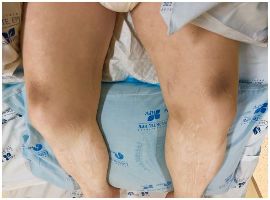AMC da Silva Almendra*, CD Rodrigues Antunes and LFL da Costa Froes
Pulmonology Service, Lisbon North Hospital and University Center, Portugal
*Corresponding author: Alexandre Manuel Carvalho da Silva Almendra, Pulmonology Service, Lisbon North Hospital and University Center, Portugal, Tel: +351911091766; E-mail: allux2@gmail.com
Received: September 11, 2020; Accepted: September 19, 2020; Published: October 05, 2020
Citation: AMC da Silva Almendra, CD Rodrigues Antunes and LFL da Costa Froes, et al. Dahl’s Sign. Clin Image Case Rep J. 2020; 2(4): 123.


